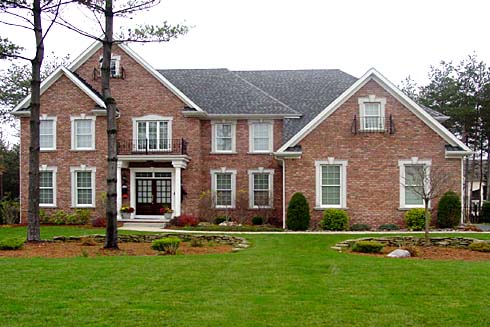URBAN SPRAWL
Unraveling Urban Sprawl: Navigating the Challenges and Solutions in Real Estate Development
Introduction:
Defining Urban Sprawl:
Urban Sprawl refers to the unchecked, often haphazard expansion of urban development into surrounding areas. This phenomenon is characterized by low-density, spread-out land use, dominated by single-use zoning and an increased dependence on automobiles for transportation. The consequences of Urban Sprawl extend beyond the physical layout of cities, influencing social, economic, and environmental aspects.
Challenges of Urban Sprawl in Real Estate:
Infrastructure Strain:
The sprawling nature of urban development often leads to increased pressure on infrastructure, including roads, utilities, and public services. This strain can result in inefficiencies, congestion, and increased maintenance costs.
Environmental Impact:
Urban Sprawl contributes to the loss of green spaces, fragmentation of ecosystems, and increased carbon emissions due to extended commuting distances. The environmental footprint of sprawling development raises concerns about sustainability and long-term ecological health.
Social Isolation:
Low-density, spread-out communities can foster social isolation as residents may be physically distant from essential services, public spaces, and community hubs. This isolation can impact social cohesion and a sense of community.
Economic Implications:
Urban Sprawl can lead to increased commuting times, contributing to lost productivity and economic inefficiencies. Additionally, the need for extended infrastructure networks can strain municipal budgets.
Sustainable Real Estate Solutions:
Smart Growth Strategies:
Implementing smart growth principles involves promoting compact, mixed-use development that prioritizes walkability, public transportation, and the efficient use of space. By concentrating development in defined areas, smart growth aims to curb the negative effects of sprawl.
Transit-Oriented Development (TOD):
TOD focuses on creating communities around public transportation hubs, reducing reliance on private vehicles. This approach enhances accessibility, reduces traffic congestion, and promotes sustainable urban living.
Incentives for Higher Density:
Encouraging higher-density development through zoning incentives can help combat sprawl. This involves allowing mixed-use developments and higher building densities to optimize land use.
Preservation of Green Spaces:
Balancing development with the preservation of green spaces is crucial for environmental sustainability. Planning efforts should prioritize the protection of natural habitats and the creation of accessible parks.
Preservation of Green Spaces:
Balancing development with the preservation of green spaces is crucial for environmental sustainability. Planning efforts should prioritize the protection of natural habitats and the creation of accessible parks.
Community Engagement:
Engaging communities in the planning process fosters a sense of ownership and ensures that development aligns with the needs and preferences of residents. Inclusive decision-making can contribute to more resilient and cohesive urban environments.
Conclusion:
As real estate developers navigate the challenges posed by Urban Sprawl, embracing sustainable and innovative solutions becomes imperative. By adopting smart growth strategies, promoting transit-oriented development, and actively involving communities in the planning process, the real estate industry can play a pivotal role in shaping urban environments that are resilient, inclusive, and environmentally conscious. In doing so, we pave the way for cities that balance growth with sustainability, creating spaces that stand the test of time.
MORE REAL ESTATE TERMS
A, B, C, D, E, F, G, H, I, J, K, L, M, N, O, P, Q, R, S, T, U, V, W, X, Y, Z
Featured New Home

Featured Mortgage Brokers
- INLANTA MORTGAGE, INC., OAK BROOK, IL
2803 BUTTERFIELD RD STE 130
OAK BROOK, IL 60523 - M AND T BANK, CHEEKTOWAGA, NY
80 HOLTZ DR STE 2
CHEEKTOWAGA, NY 14225 - Harvard Mortgage, mortgage broker in Albuquerque, NM
9551 Paseo del Norte NE
Albuquerque, NM 87122 - BANK OF NORTH CAROLINA, CHARLOTTE, NC
7422 CARMEL EXECUTIVE PARK DR
CHARLOTTE, NC 28226 - NORTHWEST MORTGAGE GROUP INC, PORTLAND, OR
10260 SW GREENBURG RD STE 900
PORTLAND, OR 97223